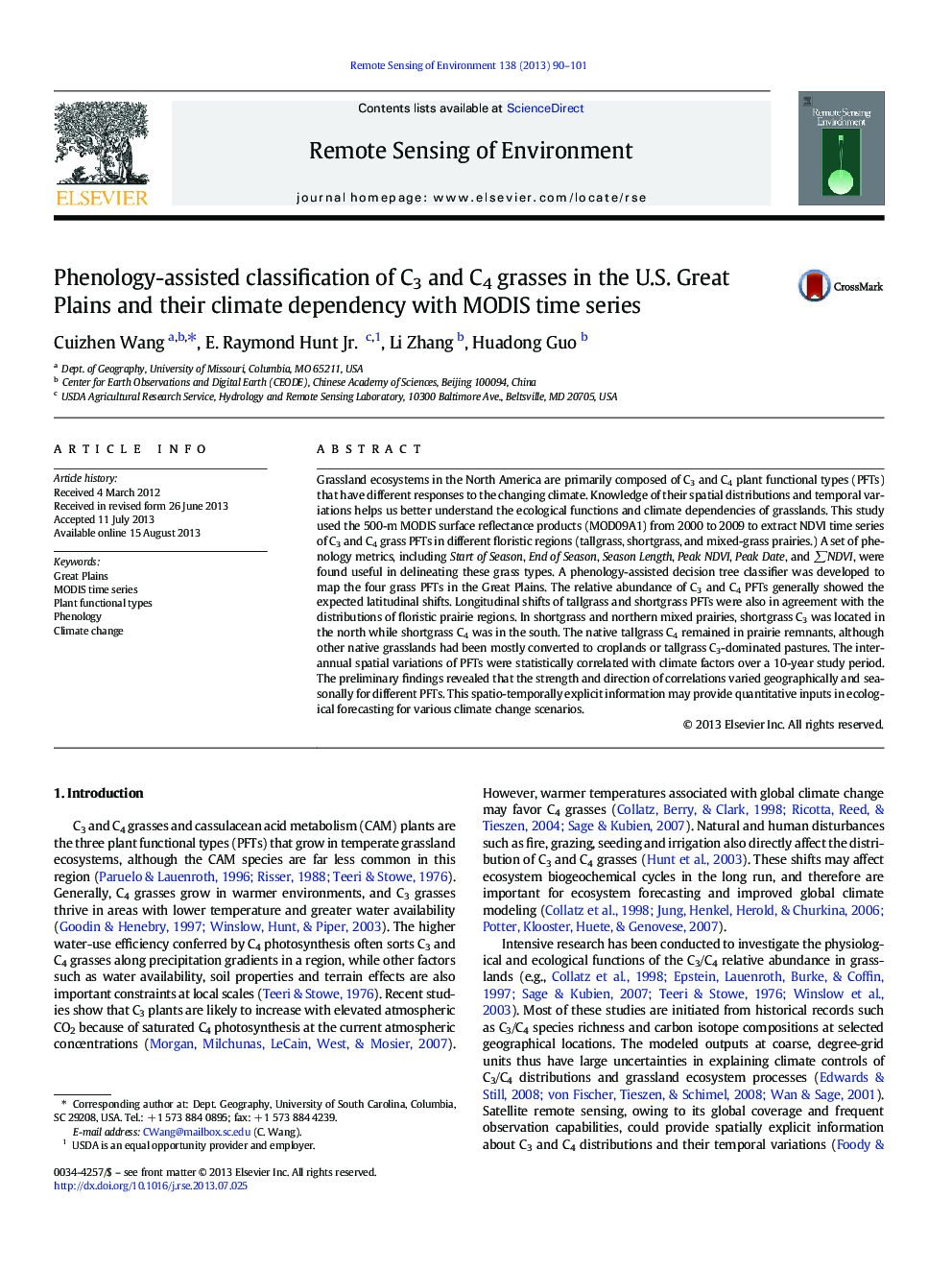| Article ID | Journal | Published Year | Pages | File Type |
|---|---|---|---|---|
| 6347186 | Remote Sensing of Environment | 2013 | 12 Pages |
â¢We developed a phenology-assisted decision tree to classify C3/C4 grasses.â¢We extracted their 10-year relative abundances in the Great Plains.â¢The inter-annual grass distributions were correlated with weather variations.â¢Climate dependency of C3/C4 grasses varied geographically and seasonally.
Grassland ecosystems in the North America are primarily composed of C3 and C4 plant functional types (PFTs) that have different responses to the changing climate. Knowledge of their spatial distributions and temporal variations helps us better understand the ecological functions and climate dependencies of grasslands. This study used the 500-m MODIS surface reflectance products (MOD09A1) from 2000 to 2009 to extract NDVI time series of C3 and C4 grass PFTs in different floristic regions (tallgrass, shortgrass, and mixed-grass prairies.) A set of phenology metrics, including Start of Season, End of Season, Season Length, Peak NDVI, Peak Date, and âNDVI, were found useful in delineating these grass types. A phenology-assisted decision tree classifier was developed to map the four grass PFTs in the Great Plains. The relative abundance of C3 and C4 PFTs generally showed the expected latitudinal shifts. Longitudinal shifts of tallgrass and shortgrass PFTs were also in agreement with the distributions of floristic prairie regions. In shortgrass and northern mixed prairies, shortgrass C3 was located in the north while shortgrass C4 was in the south. The native tallgrass C4 remained in prairie remnants, although other native grasslands had been mostly converted to croplands or tallgrass C3-dominated pastures. The inter-annual spatial variations of PFTs were statistically correlated with climate factors over a 10-year study period. The preliminary findings revealed that the strength and direction of correlations varied geographically and seasonally for different PFTs. This spatio-temporally explicit information may provide quantitative inputs in ecological forecasting for various climate change scenarios.
